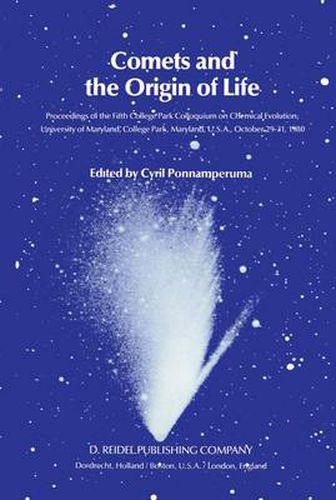Readings Newsletter
Become a Readings Member to make your shopping experience even easier.
Sign in or sign up for free!
You’re not far away from qualifying for FREE standard shipping within Australia
You’ve qualified for FREE standard shipping within Australia
The cart is loading…






This title is printed to order. This book may have been self-published. If so, we cannot guarantee the quality of the content. In the main most books will have gone through the editing process however some may not. We therefore suggest that you be aware of this before ordering this book. If in doubt check either the author or publisher’s details as we are unable to accept any returns unless they are faulty. Please contact us if you have any questions.
The return of Halley’s Cornet in 1986 has generated much ex citement in the scientific community with preparations already afoot for an International Cornet Watch and a cornet launch by the European Space Community, the Japanese and Soviet Space Scientists. The meet ing held at the University of Maryland in October 1980 was primarily stimulated by the preparations for further study of this cornet and by one of the most important unanswered questions related to comets, name ly, whether they may have made a eontribution to the origin of life on earth. Our un derstanding of the role of comets in the origin of life must necessarily come from our studies of the astronomy and the chem istry of comets. Some clues to the processes which led to the for mation of organic molecules and eventually to the appearance of life have come from these studies of comets, perhaps the most ancient of all objects in our solar system. Whether there is, however, a biology of comets still remains to be seen, although some claims have been made that perhaps comets might themselves provide an environment for even the beginnings of life. Scientists with the latest available information on comets and differing opinions as to the role of comets in the origin of life attended this symposium. The formal papers presented are now being made available to the students of chemical evolution within the pages of this volume.
$9.00 standard shipping within Australia
FREE standard shipping within Australia for orders over $100.00
Express & International shipping calculated at checkout
This title is printed to order. This book may have been self-published. If so, we cannot guarantee the quality of the content. In the main most books will have gone through the editing process however some may not. We therefore suggest that you be aware of this before ordering this book. If in doubt check either the author or publisher’s details as we are unable to accept any returns unless they are faulty. Please contact us if you have any questions.
The return of Halley’s Cornet in 1986 has generated much ex citement in the scientific community with preparations already afoot for an International Cornet Watch and a cornet launch by the European Space Community, the Japanese and Soviet Space Scientists. The meet ing held at the University of Maryland in October 1980 was primarily stimulated by the preparations for further study of this cornet and by one of the most important unanswered questions related to comets, name ly, whether they may have made a eontribution to the origin of life on earth. Our un derstanding of the role of comets in the origin of life must necessarily come from our studies of the astronomy and the chem istry of comets. Some clues to the processes which led to the for mation of organic molecules and eventually to the appearance of life have come from these studies of comets, perhaps the most ancient of all objects in our solar system. Whether there is, however, a biology of comets still remains to be seen, although some claims have been made that perhaps comets might themselves provide an environment for even the beginnings of life. Scientists with the latest available information on comets and differing opinions as to the role of comets in the origin of life attended this symposium. The formal papers presented are now being made available to the students of chemical evolution within the pages of this volume.